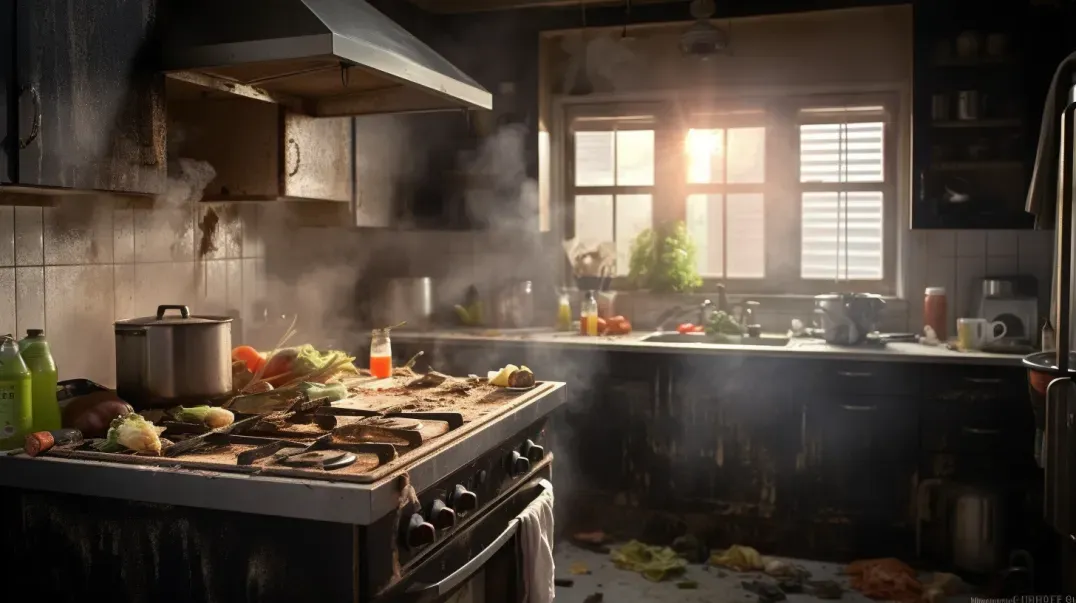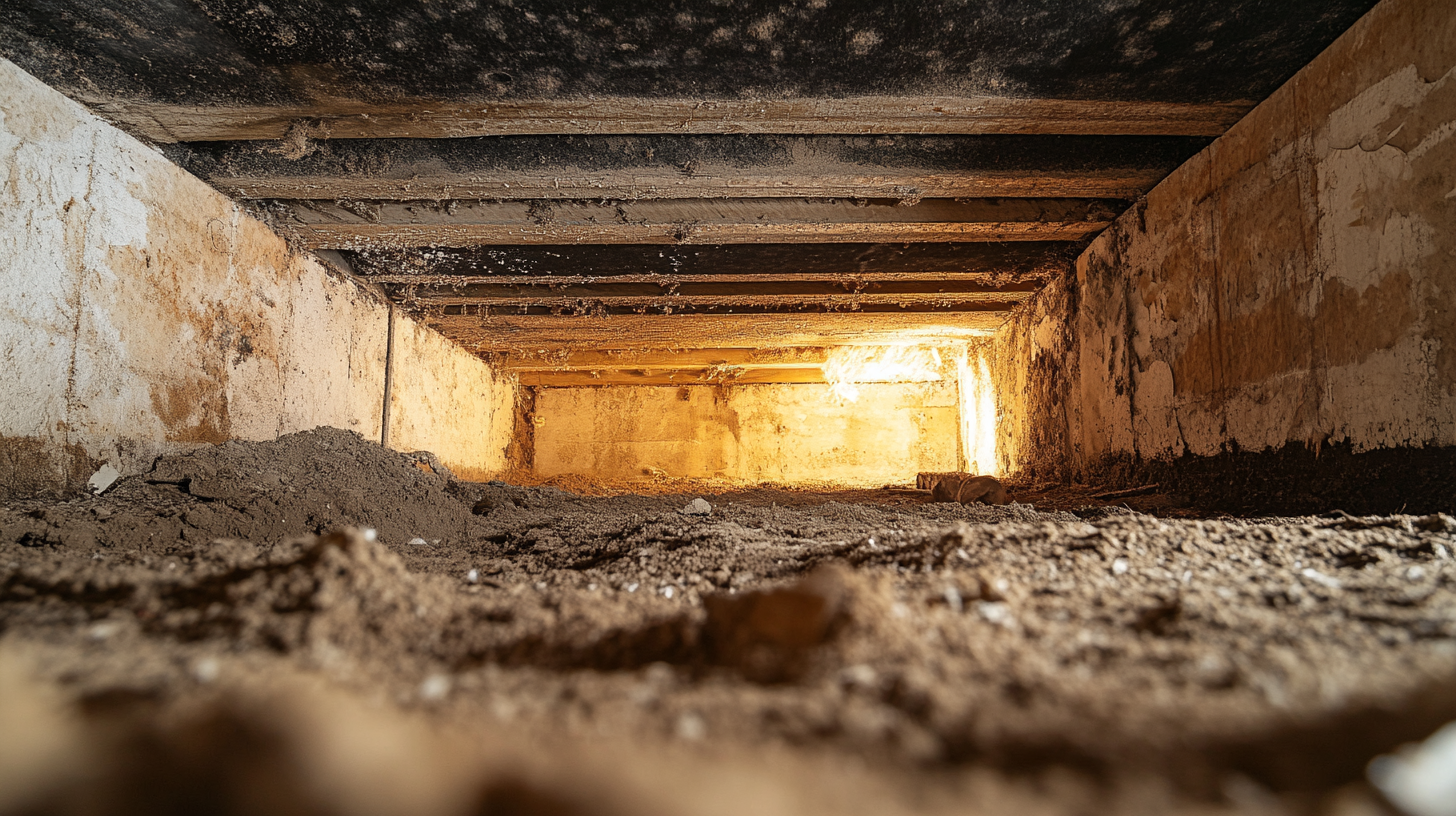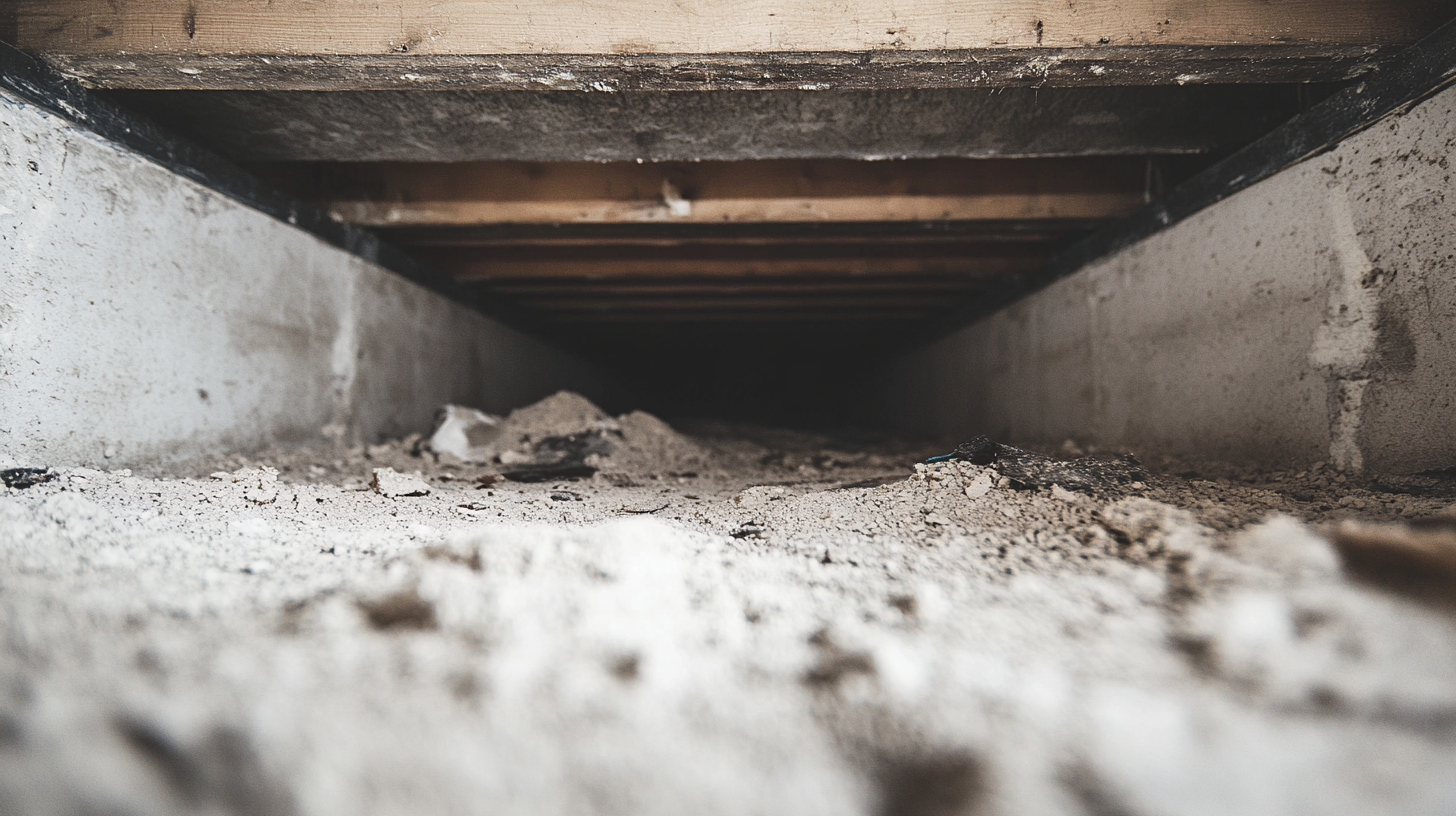Soot Removal in the Kitchen: Dealing with Cooking Fumes

In the heart of our homes, the kitchen is a place of creativity and comfort, where meals are prepared and memories are made. However, this culinary hub is also a common source of indoor air pollutants, including soot and fumes, which can affect the air quality of our living spaces and pose health risks to the inhabitants. Understanding how everyday cooking activities contribute to the accumulation of these pollutants is crucial for taking steps to mitigate their impact and maintain a healthy indoor environment.
This blog explores the process by which cooking, especially methods involving high temperatures and the combustion of organic materials, leads to the generation of soot and fumes. From the sizzling of a pan on the stove to the roasting of meat in the oven, various cooking techniques can release particulate matter, volatile organic compounds (VOCs), and other byproducts into the air. These emissions are not only a concern for cleanliness, as they can settle on surfaces and fabrics, but also for health, as they can be inhaled by those in the vicinity.
Join us as we delve into the science behind soot and fume production during cooking, identify the cooking practices most likely to contribute to their accumulation, and discuss strategies for minimizing their presence in our kitchens. By shedding light on this often-overlooked aspect of indoor air quality, we aim to empower readers with the knowledge needed to create not only delicious but also healthy meals in a clean and safe environment.
Understanding Kitchen Soot and Cooking Fumes
The kitchen, a central hub of culinary creativity and family gatherings, can also be a source of indoor air pollutants, including soot and cooking fumes. These byproducts of cooking processes, while often overlooked, can have significant implications for both the cleanliness of our homes and the health of our families. This guide delves into the common sources of soot and fumes in the kitchen and the potential health and safety concerns associated with exposure to these pollutants.
Sources of Soot in the Kitchen
Common Cooking Activities That Contribute to Soot and Fume Production
Soot and cooking fumes are primarily produced through the combustion of organic materials and the use of high-temperature cooking methods. Key contributors include:
- High-Temperature Cooking: Techniques such as frying, broiling, and grilling can produce significant amounts of smoke and fumes, especially when cooking oils are used at temperatures beyond their smoke points.
- Burning Food: Accidentally burning food not only ruins a meal but also generates soot and smoke, contributing to the accumulation of these particles on kitchen surfaces and in the air.
- Gas Stoves: The combustion process in gas stoves releases nitrogen dioxide, carbon monoxide, and even small amounts of soot into the kitchen environment, especially if the burner flame is not properly adjusted.
- Poorly Ventilated Kitchens: Lack of adequate ventilation can exacerbate the accumulation of soot and fumes, allowing these pollutants to spread throughout the home.
Health and Safety Concerns
Potential Health Risks Associated with Exposure to Cooking Fumes and Soot
The presence of soot and cooking fumes in the kitchen is not just a matter of cleanliness; it poses several health and safety concerns:
- Respiratory Issues: Inhalation of cooking fumes and soot particles can irritate the respiratory tract, leading to coughing, wheezing, and in some cases, exacerbating asthma and other chronic respiratory conditions.
- Eye and Skin Irritation: Exposure to smoke and soot can cause eye irritation and skin sensitivity, particularly in individuals with pre-existing skin conditions.
- Long-Term Health Effects: Prolonged exposure to certain compounds found in cooking fumes, such as polycyclic aromatic hydrocarbons (PAHs) and volatile organic compounds (VOCs), has been linked to an increased risk of developing cancer and heart disease.
- Fire Hazards: Accumulation of soot and grease, particularly in exhaust hoods and ducts, can pose significant fire risks if not regularly cleaned and maintained.
Strategies for Minimizing Soot Production While Cooking
Cooking is a daily activity in most households, but it can also be a significant source of indoor air pollution, including soot and fumes. Minimizing soot production not only contributes to a cleaner kitchen environment but also supports overall health and well-being. This guide offers practical strategies and recommendations for reducing soot production through proper cooking techniques and choosing the right equipment.
Proper Cooking Techniques
The way you cook can significantly impact the amount of soot produced. Implementing certain techniques can help minimize soot and improve air quality in your kitchen.
Tips for Reducing Soot Production:
- Control Temperature: High temperatures can cause oils and fats to burn, producing soot. Cook at the lowest effective temperature to reduce soot production.
- Use Lids: Covering pots and pans helps cook food more evenly and prevents the vaporization of oils into the air, reducing soot and fumes.
- Prevent Spills: Keep the stovetop clean and prevent spills, as burning food residue contributes to soot production.
- Choose the Right Oils: Some oils have higher smoke points than others. Using oils like avocado, canola, or peanut oil, which have higher smoke points, can reduce soot production during cooking.
Choosing the Right Cooking Equipment
The equipment you use for cooking plays a crucial role in minimizing soot production. Investing in quality stoves, ovens, and cookware can make a significant difference.
Recommendations for Low-Soot Equipment:
- Stoves: Opt for stoves with adjustable flame settings to control the heat more precisely. Induction stoves are also an excellent option as they offer efficient heating with minimal soot production.
- Ovens: Convection ovens circulate hot air around the food, cooking it more evenly and reducing the need for high temperatures that can produce soot.
- Cookware: Non-stick cookware requires less oil, reducing the potential for soot. Additionally, using the correct size pans for burners can prevent flames from licking the sides of the pan and producing soot.
Effective Ventilation Solutions
Proper ventilation in your home, especially in areas like the kitchen, is crucial for maintaining air quality and reducing pollutants such as soot and fumes. Effective ventilation solutions can significantly improve your living environment by removing unwanted odors, reducing grease buildup, and minimizing exposure to potentially harmful substances. This guide explores the importance of kitchen ventilation and the different systems available to homeowners.
Importance of Kitchen Ventilation
Kitchen ventilation plays a vital role in maintaining a healthy and comfortable home environment. Cooking activities, particularly those involving high temperatures or the combustion of oils and fats, can produce soot, smoke, and fumes that may pose health risks if inhaled over time. Proper ventilation helps to:
- Reduce Pollutants: Efficiently removes cooking by-products, such as soot, smoke, and odorous fumes, from the air.
- Improve Air Quality: Ensures a continuous supply of fresh air, enhancing the overall air quality within your home.
- Prevent Grease Buildup: Minimizes the accumulation of grease on kitchen surfaces, which can attract dust and become a fire hazard.
- Enhance Comfort: Reduces excess heat and odors from cooking, making the kitchen a more pleasant environment.
Types of Ventilation Systems
Several ventilation options are available, each with its advantages, to cater to different kitchen layouts and cooking habits. Choosing the right system depends on your specific needs, kitchen size, and budget.
Range Hoods
- Description: Installed over the stove, range hoods are designed to capture and exhaust smoke, steam, and odors directly from the cooking surface.
- Benefits: Highly effective at removing airborne contaminants; available in various styles to complement kitchen aesthetics.
- Considerations: Requires regular cleaning to maintain efficiency; ducted models are generally more effective but may require professional installation.
Exhaust Fans
- Description: Mounted on a kitchen wall or ceiling, exhaust fans pull air out of the kitchen, reducing moisture, smoke, and odors.
- Benefits: Can be a cost-effective solution; suitable for kitchens where a range hood is not feasible.
- Considerations: May not be as effective as range hoods in capturing smoke directly from the cooking surface; placement is crucial for optimal performance.
- Downdraft Ventilation Systems
- Description: Integrated into the cooking surface or countertop, downdraft systems draw air downward, capturing smoke and fumes.
- Benefits: Offers a sleek, integrated look; ideal for kitchens with an island cooktop where a hood is not practical.
- Considerations: May not capture rising smoke as effectively as overhead systems; often more expensive and requires professional installation.
Regular Cleaning Techniques for Soot Removal
Maintaining a clean and healthy home environment requires regular attention to areas prone to soot and grease buildup, such as kitchens and fireplaces. Implementing daily cleaning habits and periodic deep cleaning strategies can significantly reduce the accumulation of these substances, improving air quality and extending the life of your appliances and surfaces. This guide provides practical steps for both routine and thorough cleaning to keep soot and grease at bay.
Daily Cleaning Habits
Incorporating simple cleaning routines into your daily habits can prevent the accumulation of soot and grease, making it easier to maintain a clean home.
Step-by-Step Guide for Daily Cleaning:
- Wipe Surfaces After Use: Immediately after cooking or using the fireplace, wipe down surfaces with a damp cloth to remove fresh soot and grease particles.
- Use Appropriate Cleaners: For kitchen surfaces, use a mild detergent or a solution of vinegar and water to cut through grease without damaging surfaces.
- Clean Cooking Appliances: After each use, ensure that stovetops and ovens are free of food particles and grease, using a specialized cleaner if necessary.
- Ventilate the Area: During and after cooking or when using the fireplace, ensure adequate ventilation to help disperse smoke and airborne particles.
- Empty and Clean Ashtrays Regularly: If smoking is permitted indoors, regularly emptying and wiping down ashtrays can prevent soot from settling on surfaces.
Deep Cleaning Strategies
Periodic deep cleaning is essential for removing stubborn soot and buildup that daily cleaning may miss. This process requires more time and effort but is crucial for maintaining a clean and healthy environment.
Detailed Instructions for Periodic Deep Cleaning:
- Schedule Regular Deep Cleaning: Plan for a thorough cleaning of areas prone to soot and grease buildup every few months or as needed based on usage.
- Prepare the Area: Remove any items from the cleaning area, cover furniture or appliances with a cloth to protect from cleaning solutions, and wear protective gloves and a mask.
- Use Stronger Cleaners: For tough soot and grease, use stronger cleaning agents designed for deep cleaning. Be sure to follow the product's instructions and test on a small area first.
- Scrub Surfaces: Use a scrubbing brush or sponge to work the cleaner into the soot or grease. For textured surfaces or grout, a toothbrush can reach into crevices.
- Rinse and Dry: After scrubbing, rinse the area thoroughly with water and dry with a clean cloth to prevent water spots and streaks.
- Inspect and Repeat if Necessary: Check the area for any remaining soot or grease. Some spots may require a second treatment for complete removal.
Natural and Chemical Cleaning Solutions
In the quest to maintain a clean and healthy home, particularly when dealing with stubborn soot and grease, homeowners often find themselves at a crossroads between using natural, eco-friendly cleaning solutions and opting for commercial cleaners. Both approaches have their merits, depending on the severity of the soot buildup, the surfaces affected, and personal preferences regarding environmental impact and health considerations. This guide explores effective natural cleaning recipes for everyday soot removal and provides recommendations for when commercial cleaners might be the more suitable choice.
Eco-Friendly Cleaning Solutions
Recipes and Usage Instructions for Natural Cleaning Solutions That Effectively Remove Soot
Natural cleaning solutions not only minimize the impact on the environment but also reduce exposure to potentially harmful chemicals. Here are some eco-friendly recipes for tackling soot:
- Vinegar and Water Solution: Mix equal parts white vinegar and water in a spray bottle. Spray the solution onto the soot-stained area, let it sit for a few minutes, then wipe clean with a damp cloth. Vinegar's acidity helps break down soot and grease.
- Baking Soda Paste: Create a paste using baking soda and a small amount of water. Apply this paste to the soot stain and gently scrub with a soft brush or cloth. Baking soda acts as a mild abrasive, effectively removing soot without damaging surfaces.
- Lemon Juice and Salt: Mix lemon juice with salt to create a thick paste. This mixture can be applied to soot stains on non-porous surfaces. The lemon juice's acidity and the salt's abrasive texture work together to clean the stain.
When to Use Commercial Cleaners
Recommendations for Commercial Cleaning Products Suitable for Soot and Grease Removal
While natural solutions are effective for light to moderate soot and grease, there are instances where commercial cleaners may be necessary:
- Heavy Buildup: For severe soot and grease accumulation, especially in areas like the oven or exhaust fan filters, commercial degreasers can provide the extra strength needed to break down and remove stubborn residues.
- Specific Surfaces: Certain surfaces, such as stainless steel or ceramic cooktops, may require specialized cleaners to avoid damage. Look for commercial products designed for these materials.
- Time Constraints: When time is of the essence, commercial cleaners can offer a quicker and more convenient solution, with many products designed for spray-on, wipe-off application without the need for mixing or measuring.
When selecting commercial cleaners, opt for products with transparent ingredient lists and consider those with eco-friendly or non-toxic labels to minimize environmental impact and health risks.
FAQs
Contact Fast Response Cleaning & Restoration Today!
Fast Response Cleaning & Restoration will do everything we can to ensure your experience with us is excellent.
Request A FREE Estimate
Request A FREE Estimate Form
CHECKOUT RECENT POST



Have an Emergency? We're Here to Help!
When it comes to disaster cleanup, we are a seasoned veteran in the industry and have helped hundreds of property owners just like you.
Our disaster recovery teams are available 24-7 to quickly clean up and repair disasters of all types.
